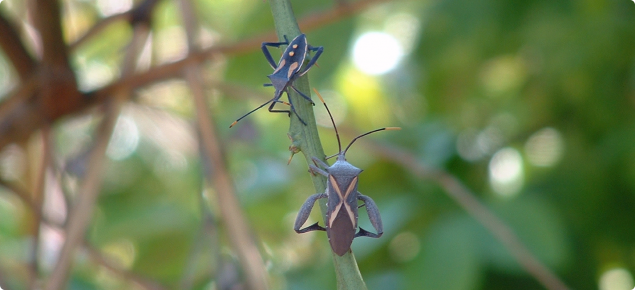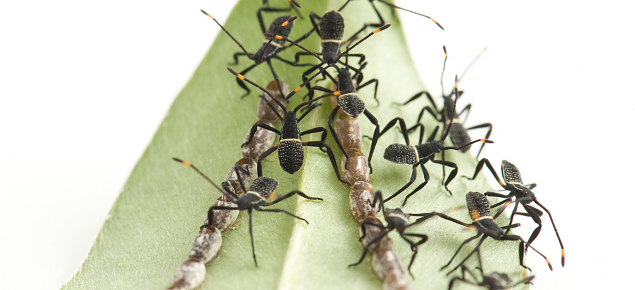Crusader bugs feed on a wide range of plants, including wattles, eucalypts, citrus and garden plants (e.g. roses). Adults are about 20-25mm long and can spray an unpleasant odour if disturbed.
There are five nymphal stages and nymphs are smaller than the adult with a red abdomen when very young (first stage). Older nymphs have orange spots in the middle of the abdomen. The complete life cycle takes eight weeks in summer.
Damage
Adults and nymph prefer to feed on new shoots, piercing plants with their sucking mouthparts. Feeding causes the area above to wilt and die. They are most active in spring/summer/autumn. Young shoots should be monitored at this time.
Economic/social impacts
Crusader bugs are minor pests of citrus.
Monitoring
- Check five randomly selected young shoots on each tree.
- Control of crusader bugs is rarely required. If more than 25% of young shoots are infested, spot spray with a selective insecticide.
- Many predators control crusader bugs including birds, spiders, assassin bugs and parasitic wasps.


